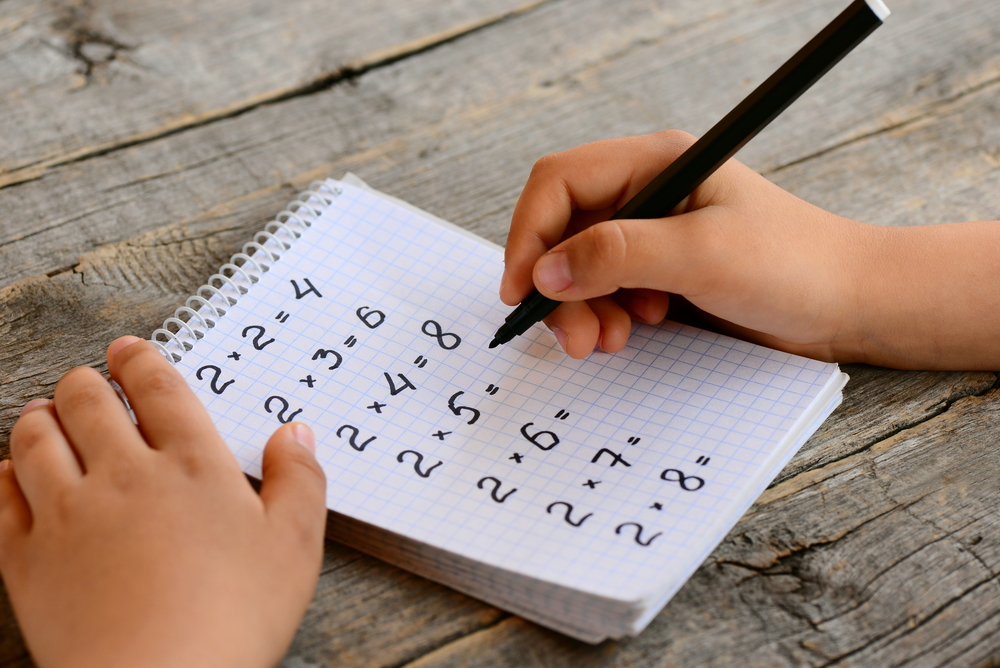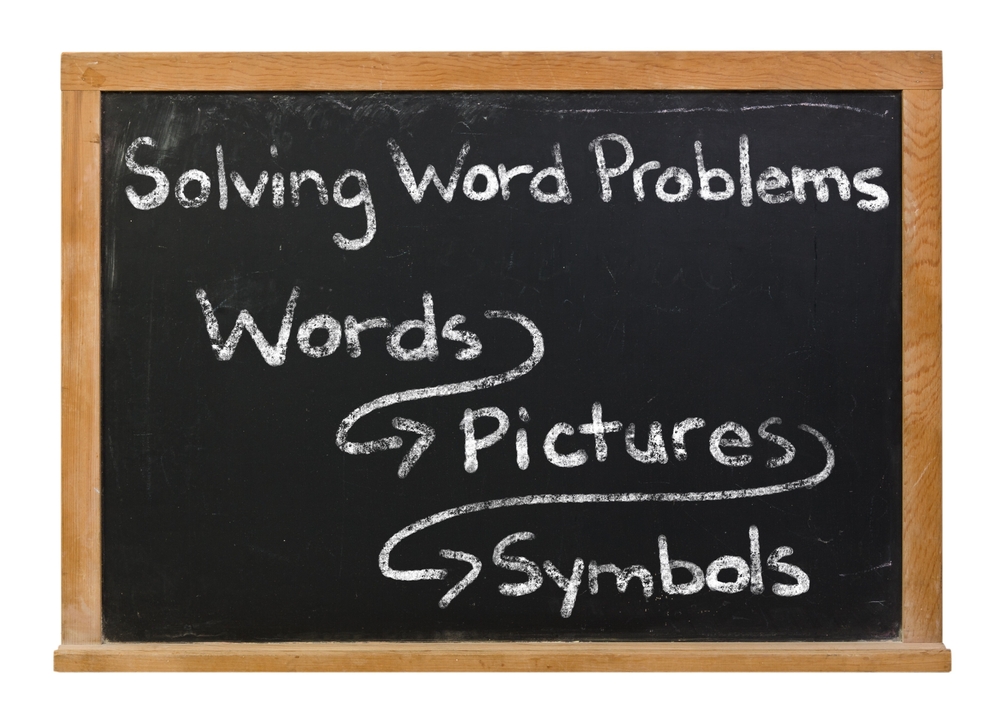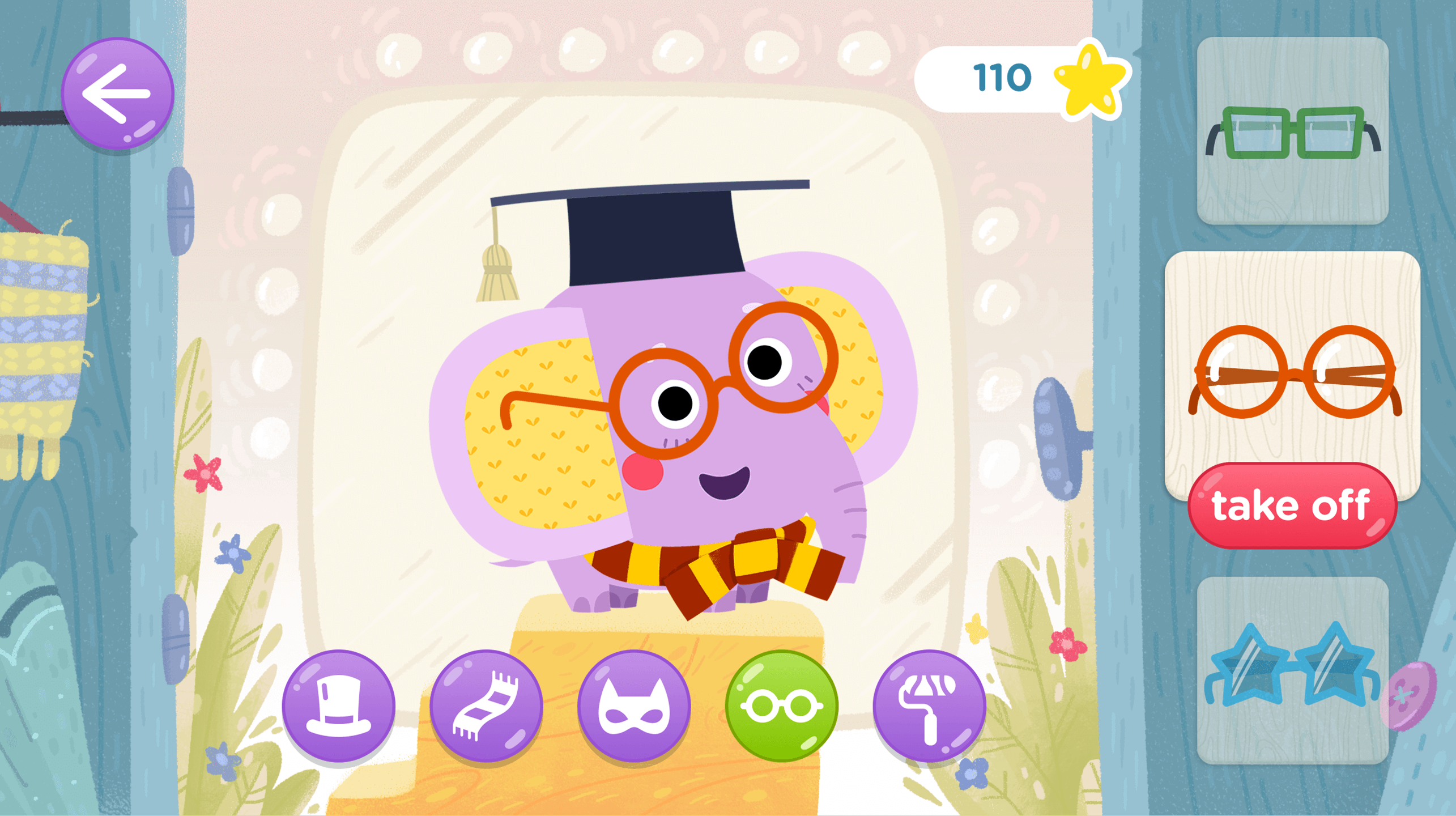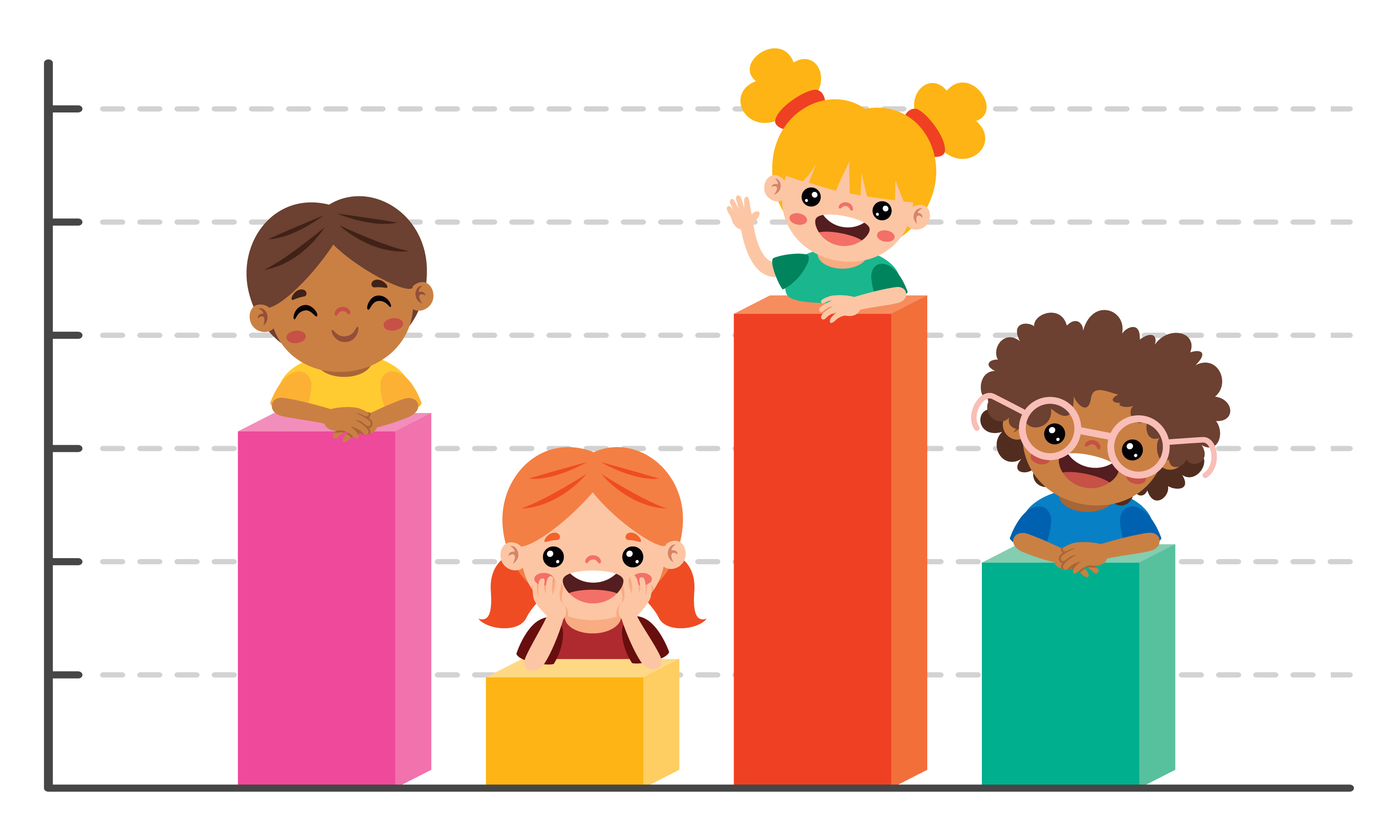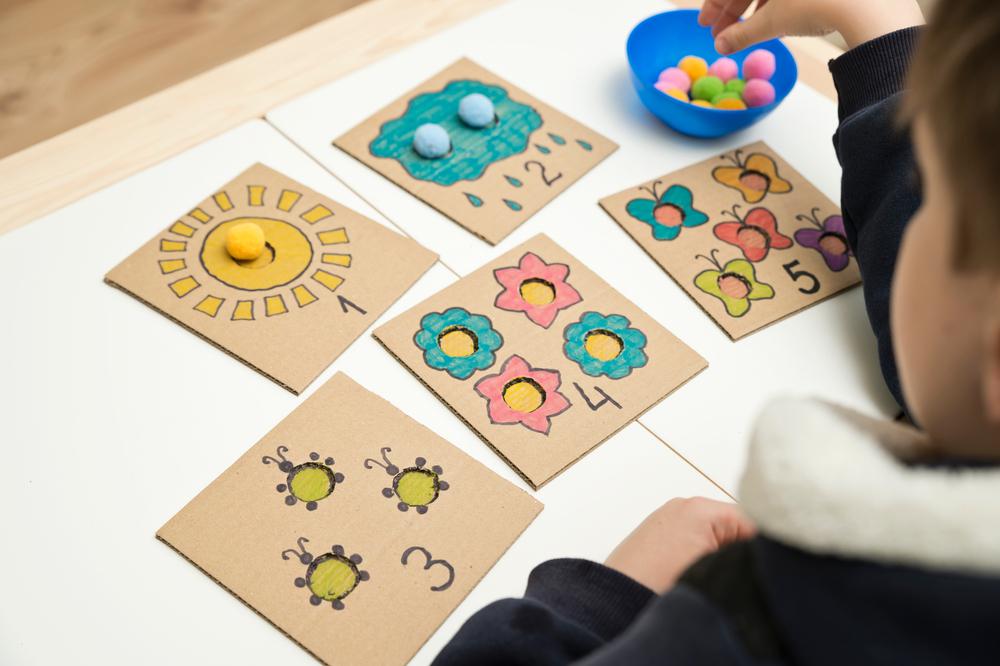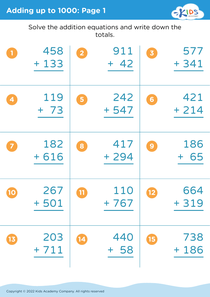Addition skills Subtraction Worksheets for Ages 4-6
5 filtered results
-
From - To
Our engaging Addition and Subtraction Worksheets for Ages 4-6 are expertly designed to foster essential math skills in young learners. Through vibrant and enjoyable activities, children will master the basics of adding and subtracting, building a strong foundation for future math success. These worksheets promote both understanding and application by blending fun graphics with educational content, ensuring kids stay motivated and confident in their learning. Ideal for early grade classrooms and home practice, our carefully crafted worksheets support interactive, hands-on learning experiences, helping children achieve their potential in math with confidence and excitement.
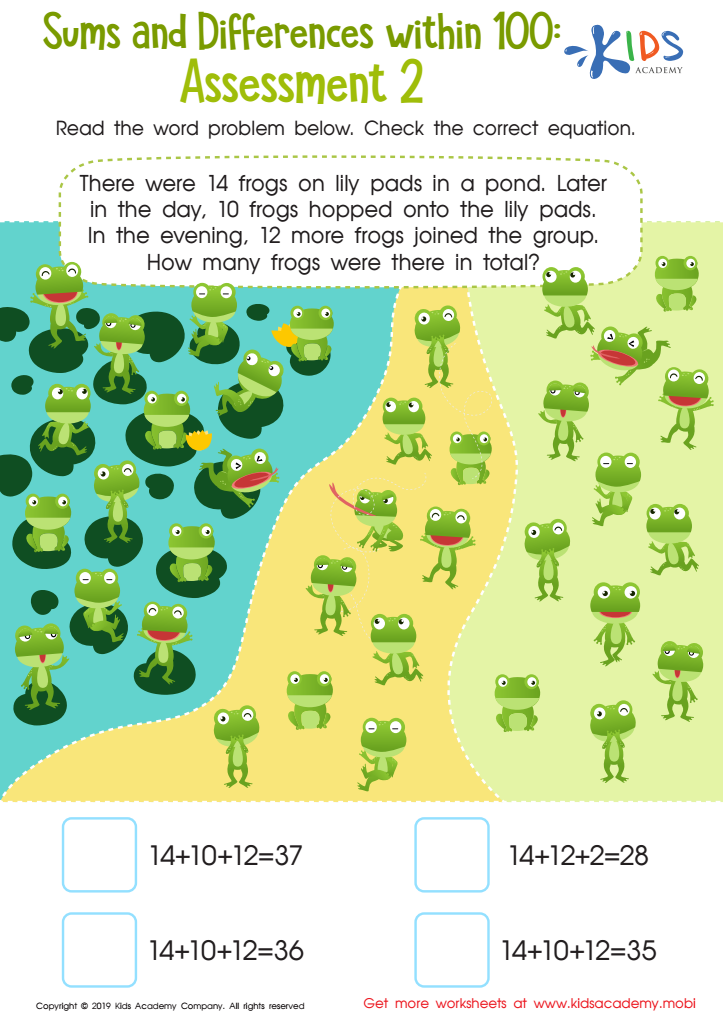

Sums and Differences Within 1 - Assessment 2 Worksheet
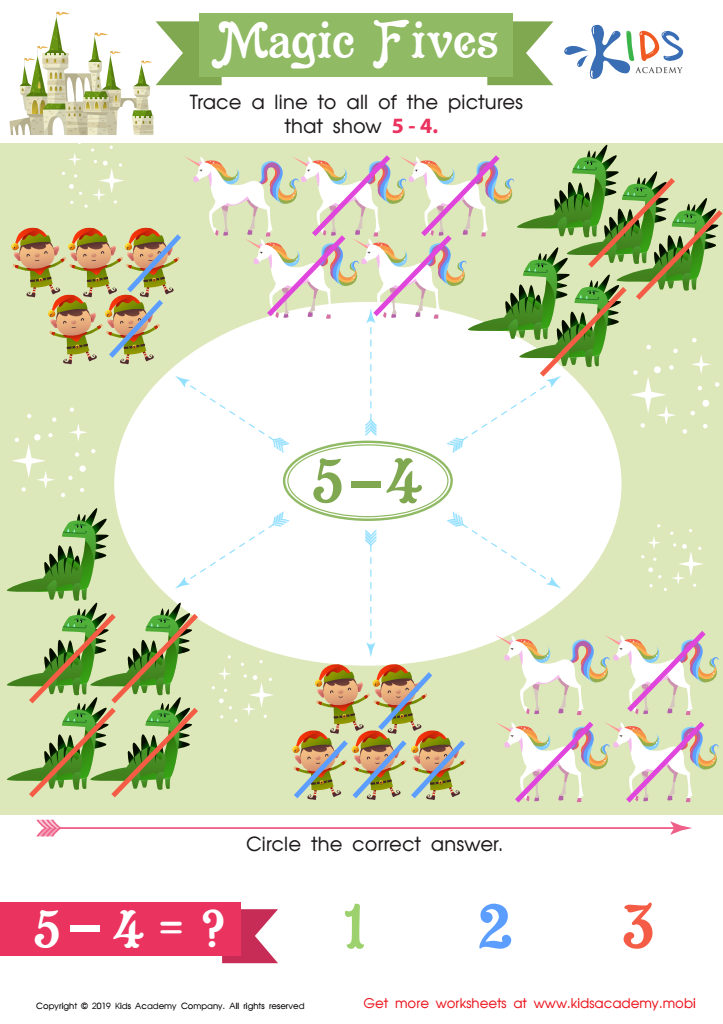

Magic Fives Worksheet
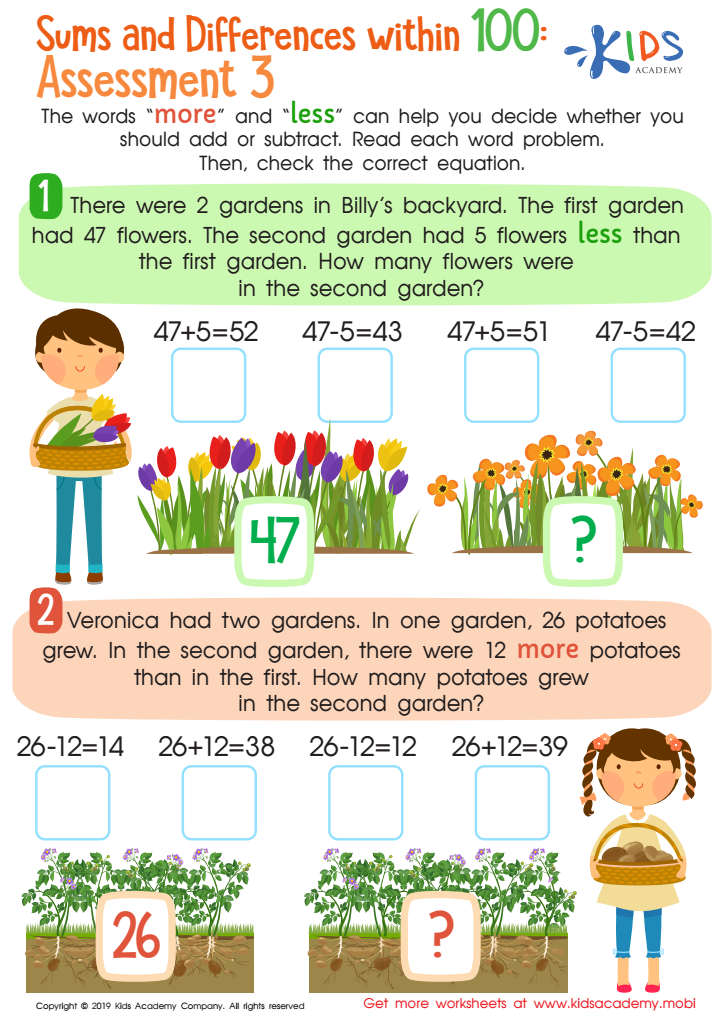

Sums and Differences Within 1 - Assessment 3 Worksheet
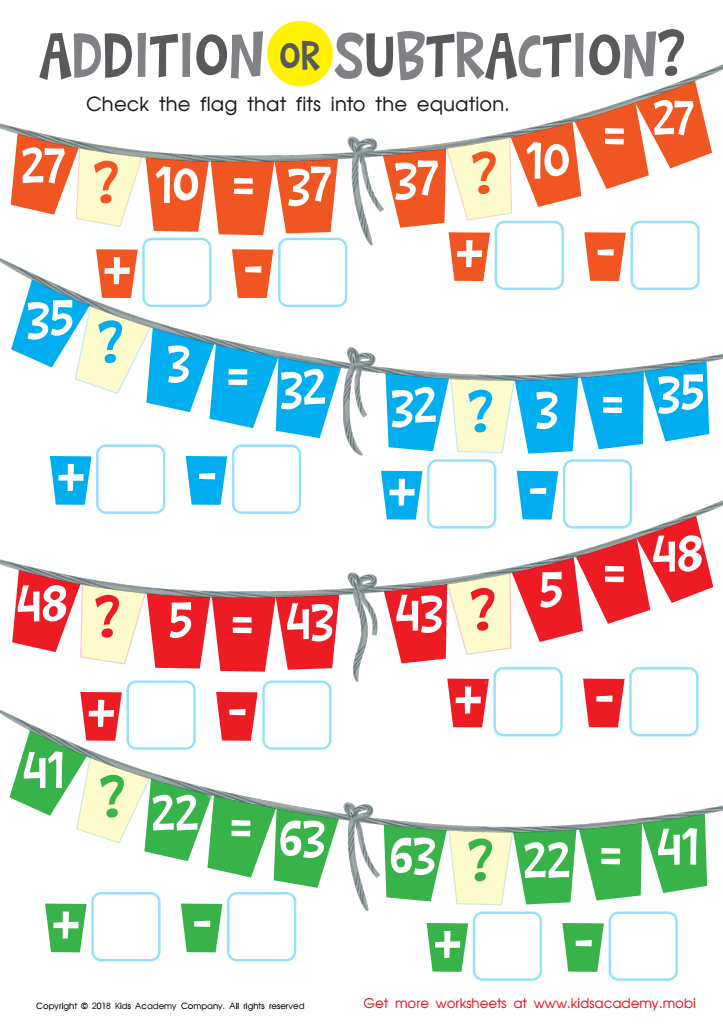

Addition or Subtraction? Worksheet
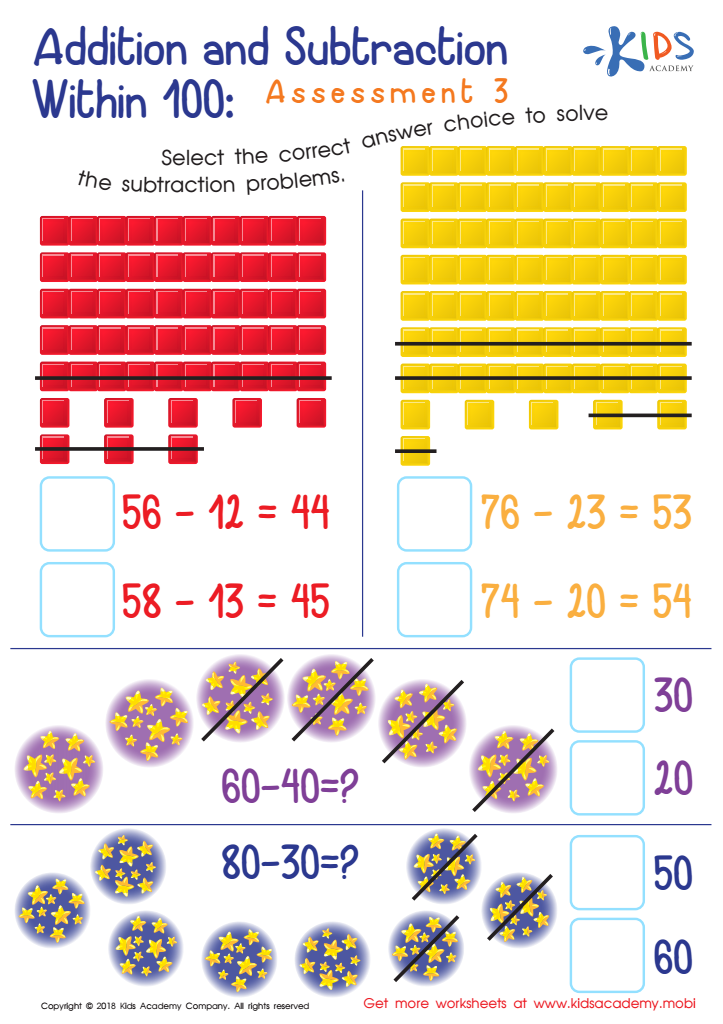

Addition and Subtraction Within 1: Assessment 3 Worksheet
Parents and teachers should prioritize teaching addition and subtraction to children ages 4-6 because these fundamental math skills form the cornerstone for all future mathematical learning. At this developmental stage, children’s brains are highly receptive to new information and concepts. By introducing basic arithmetic early, parents and teachers can foster a solid foundation, making it easier for children to grasp more advanced math concepts later on.
Addition and subtraction experiences enhance problem-solving skills by encouraging young children to think critically and logically. As they learn to combine and separate quantities, they build a better understanding of numbers and relationships, which are essential components of a wide range of cognitive skills.
Furthermore, mastering these early math skills boosts a child's confidence in their academic abilities. Success in these areas can generate a positive attitude towards learning and school in general. It helps them to better cope with the increased complexity of math and other subjects as they progress through their education.
Parents and teachers can support learning through engaging activities like counting objects, using visual aids, or playing math-based games. By fostering a supportive environment for learning addition and subtraction, adults can set children on a path to academic success and a lifelong love of learning.
 Assign to My Students
Assign to My Students


